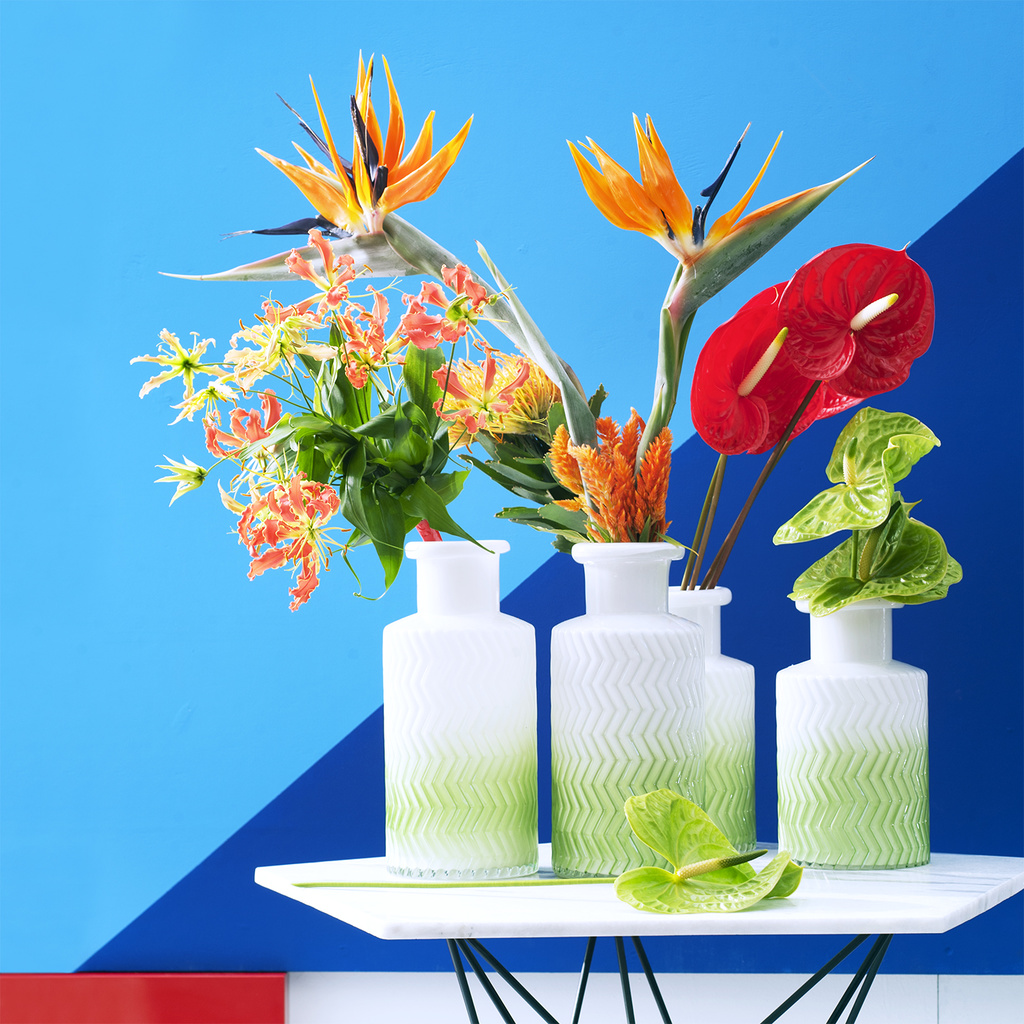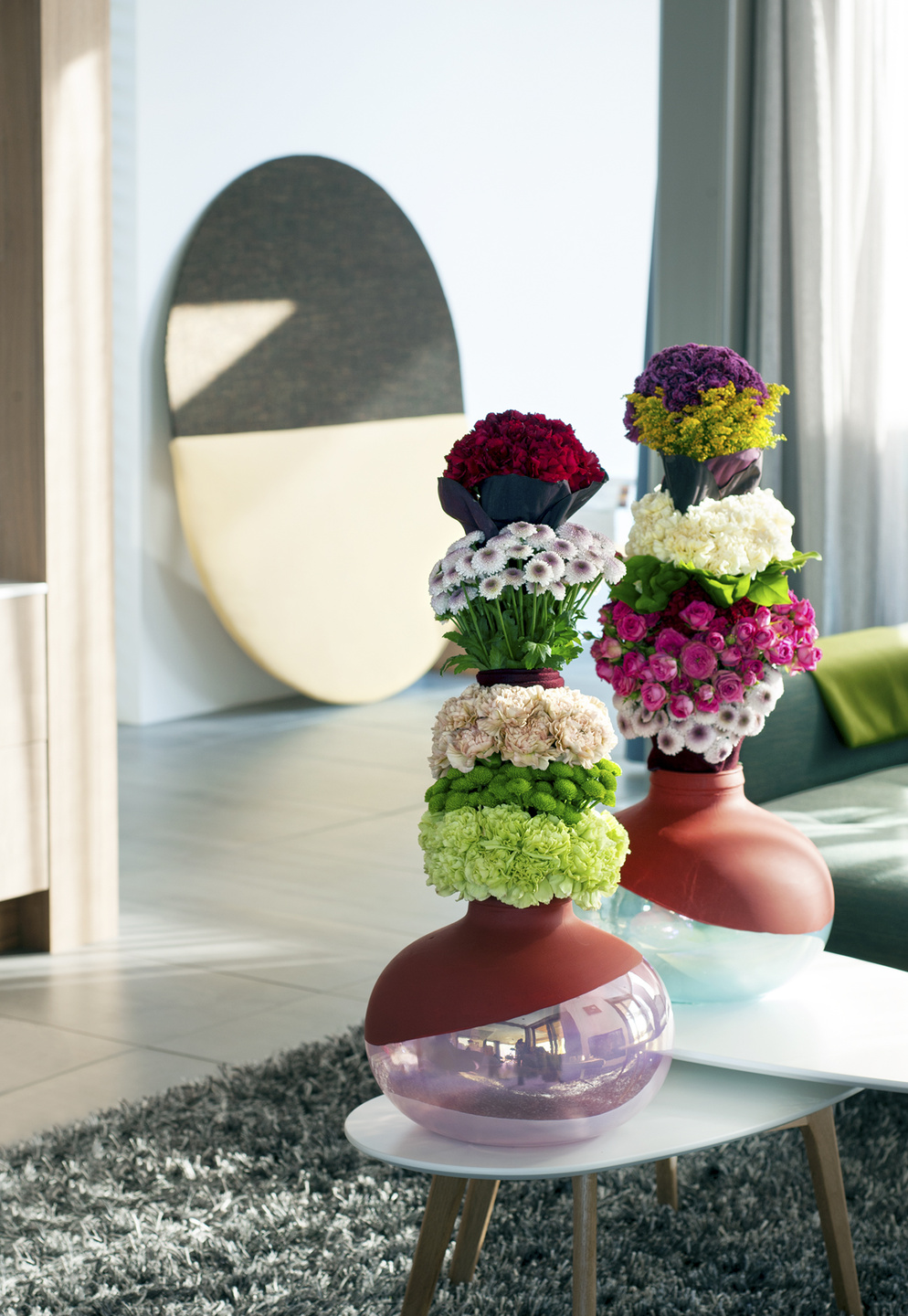Chrysanthemum - Flower of Month - October
Chrysanthemum: in the Flower Agenda all October
October will have a golden glow this year, thanks to the radiant chrysanthemum. It doesn’t only bring warmth and colour to your interior, but also good luck! Consumers can read all about this fabulous bloom at Funnyhowflowersdothat.co.uk. Introduce your customers to the chrysanthemum!
The origin
The chrysanthemum has been incredibly popular in Asia for centuries. The flower originates from China and Japan, where they fell in love with it immediately. The chrysanthemum arrived in Europe in around 1700. The chrysanthemum’s name derives from the Greek: chrys (gold) and anthemon (flower). Originally you could only enjoy the chrysanthemum in golden yellow.
The chrysanthemum has been incredibly popular in Asia for centuries. The flower originates from China and Japan, where they fell in love with it immediately. The chrysanthemum arrived in Europe in around 1700. The chrysanthemum’s name derives from the Greek: chrys (gold) and anthemon (flower). Originally you could only enjoy the chrysanthemum in golden yellow.
Colours and shapes
You might almost forget that the chrysanthemum was originally yellow, since the flower is now available in an incredibly wide range of colours. Opt for colour and enrich your home with chrysanthemums in warm gold, bronze or deep orange tones. Or go for subtle and calm with chrysanthemums in soft shades of white, pink or purple.
This fantastic flower also comes in different varieties: you can release your inner stylist with spray, disbudded or Santini chrysanthemums. On the latter, the flowers are branched on the stem and are far more compact, to give a unique look! And if that wasn’t choice enough, there are also many different flower shapes: from single to double flowered and from spider to pom-pom shape.
You might almost forget that the chrysanthemum was originally yellow, since the flower is now available in an incredibly wide range of colours. Opt for colour and enrich your home with chrysanthemums in warm gold, bronze or deep orange tones. Or go for subtle and calm with chrysanthemums in soft shades of white, pink or purple.
This fantastic flower also comes in different varieties: you can release your inner stylist with spray, disbudded or Santini chrysanthemums. On the latter, the flowers are branched on the stem and are far more compact, to give a unique look! And if that wasn’t choice enough, there are also many different flower shapes: from single to double flowered and from spider to pom-pom shape.
Caring
- Provide a clean vase and clean water at room temperature.
- Trim the stem diagonally with a sharp knife.
- Remove the leaves so they’re not hanging in the water.
- Add cut flower food.
- Refresh the water every five days and top it up regularly.
- Don’t place your flowers in full sun, near a heater, close to a fruit bowl or in a draught.
Symbolism
The stylish chrysanthemum brings both infinite colour into your home as well as a healthy dose of joy, since this flower represents health and happiness. It doesn’t just look good on your own sideboard, but also makes a lovely gift!
The stylish chrysanthemum brings both infinite colour into your home as well as a healthy dose of joy, since this flower represents health and happiness. It doesn’t just look good on your own sideboard, but also makes a lovely gift!
Thank you to Flower Council of Holland for the information
Don't dismiss the humble Chrysant, there are beautiful varieties out there in all colours and many with a vintage feel to them which is still a very popular style.
They are also long lasting and budget friendly, so win win in designs that will just last and last, giving excellent value for money. A great pick me up and treat at any time of year.
We always have some in stock, ask to see the latest varieties available.
Sandra X


 The anthurium originates from Brazil, Ecuador, Peru, Colombia and Venezuela. The French botanist Eduard André discover the flower in Colombia and Ecuador in 1876. In the wild, Gloriosa - a cousin of the lily family - clambers upwards in India and southern Africa. The official name is Gloriosa rothschildiana, named after zoologist Lionel Rothschild. Strelitzia originates from South Africa, and was transported to many countries in the 18th century. That’s also how it acquired its name: the wife of the English King George III, Charlotte of Meckelenburg-Strelitz, had a great love for flowers and plants, and so this remarkable flower was named after her.
The anthurium originates from Brazil, Ecuador, Peru, Colombia and Venezuela. The French botanist Eduard André discover the flower in Colombia and Ecuador in 1876. In the wild, Gloriosa - a cousin of the lily family - clambers upwards in India and southern Africa. The official name is Gloriosa rothschildiana, named after zoologist Lionel Rothschild. Strelitzia originates from South Africa, and was transported to many countries in the 18th century. That’s also how it acquired its name: the wife of the English King George III, Charlotte of Meckelenburg-Strelitz, had a great love for flowers and plants, and so this remarkable flower was named after her. 





























